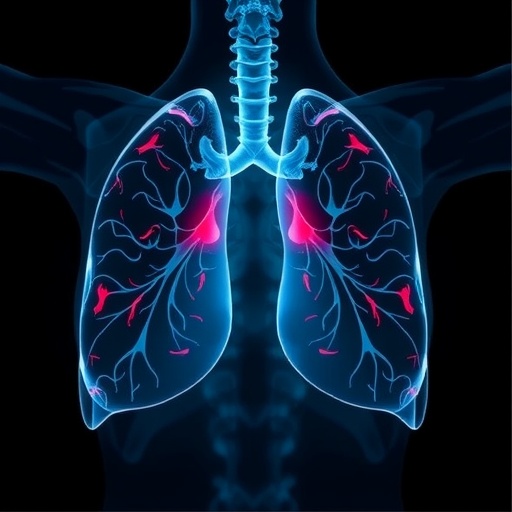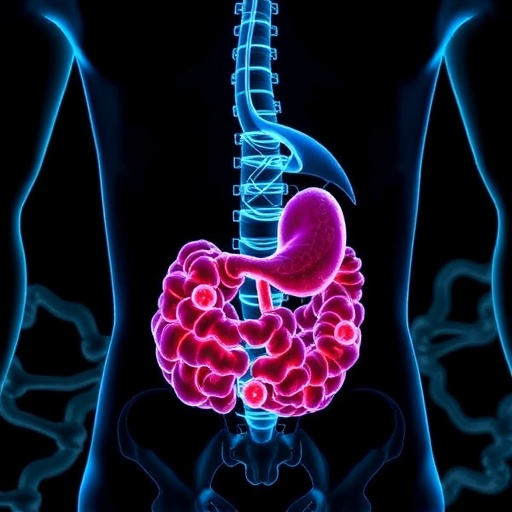
In the relentless global fight against cancer, lung cancer remains the deadliest malignancy, largely due to its often late diagnosis and aggressive progression. Early detection has long been hailed as a critical pathway to improving survival rates, driving widespread adoption of screening programs across many countries. However, the effectiveness of such initiatives varies significantly, a complexity rooted in the heterogeneity within populations and trial designs. A new landmark study, spearheaded by Welz, van der Aalst, Alfons, and their team, provides a rigorous comparative analysis of this heterogeneity by examining two large-scale randomized controlled trials (RCTs) on lung cancer screening effectiveness. Their findings, now published in Nature Communications, unravel the intricate layers of variability that influence screening outcomes, introducing vital insights for the future tailoring of early detection strategies.
Lung cancer screening has predominantly utilized low-dose computed tomography (LDCT) as the frontline tool to identify early-stage malignancies. This technology facilitates the detection of nodules or abnormalities small enough to be amenable to curative treatment but large enough to be radiologically discernible. Despite its promise, the translation of LDCT screening benefits observed in controlled settings to real-world clinical practice remains a formidable challenge. The crux of the issue lies in the diverse characteristics of screened populations—ranging from age, smoking history, and genetic predispositions to environmental exposures—all of which influence both the baseline risk of lung cancer and the expected mortality reduction through screening.
The study by Welz et al. astutely compares two seminal randomized controlled trials: one conducted in the United States, the other in Europe, representing two distinct geographic and demographic backgrounds. These trials serve as gold standards in lung cancer screening research, having set benchmarks for screening protocols, follow-up strategies, and outcome assessments. Yet, each trial employed different eligibility criteria, screening intervals, and statistical approaches, leading to divergent results in terms of screening efficacy. By meticulously analyzing these trials side by side, the researchers attempt to dissect the root causes of these disparities, exploring how heterogeneity at both the patient and trial levels shapes the overall effectiveness signal.
Central to their analysis is the concept of “effect heterogeneity,” which refers to variations in screening outcomes influenced by subgroup characteristics rather than a uniform effect across all individuals. The authors leverage advanced statistical modeling to accommodate multifaceted interactions between demographic factors and clinical parameters, painting a nuanced picture of which subpopulations benefit most from screening. Among the intriguing discoveries is the revelation that lung cancer screening does not exert uniform mortality reduction across all at-risk groups. Instead, specific strata defined by age brackets, smoking intensity, and lung function parameters manifest significantly different absolute and relative benefits, prompting a call for more personalized screening frameworks.
This is particularly consequential considering the cost-effectiveness and risk-benefit balance of lung cancer screening. Overdiagnosis, false positives, and radiation exposure pose real concerns, especially when applied indiscriminately. By highlighting the differential impact of screening, the study guides clinicians and policymakers to better target resources toward cohorts with maximal expected gains. Moreover, it accentuates an urgent need for adaptive screening models that dynamically update eligibility based on emerging biomarkers and refined risk calculators, rather than relying solely on historical criteria.
Beyond patient-level factors, the comparative inquiry also delves into trial-level design considerations that could explain outcome heterogeneity. Screening interval lengths, adherence rates, and diagnostic follow-up algorithms are scrutinized as modulators affecting the magnitude of achieved mortality reductions. For instance, one trial utilized annual screenings, while the other had biennial intervals, which potentially influenced tumor detection timing and subsequent survival outcomes. The authors also discuss the impact of varying definitions of control arms, crossover contamination, and statistical endpoints, underscoring how methodological heterogeneity can confound direct comparisons and interpretations.
Moreover, the study places considerable emphasis on the statistical approaches employed to evaluate screening effectiveness. Using harmonized analytical frameworks across both trials, the researchers recalibrate effect estimates to a common metric, allowing for more precise cross-trial comparisons. The results reveal that standard meta-analytic techniques may underestimate heterogeneity, suggesting that future analyses require sophisticated multi-level models capable of incorporating individual trial characteristics and participant data. This approach sets a new standard for evidence synthesis in cancer screening, acknowledging the layered complexity inherent in these interventions.
Importantly, the authors also explore socioeconomic determinants that interact with screening outcomes. Access to healthcare, health literacy, and socioeconomic status represent critical axes of disparity that often mediate screening uptake and follow-through. The observed heterogeneity in screening efficacy may, therefore, partially reflect systemic inequities rather than purely biological variability. The study calls attention to the necessity of incorporating these social determinants into screening program designs to avoid perpetuating health disparities and to maximize population-wide benefits.
From a technological standpoint, the paper hints at future opportunities to integrate artificial intelligence and machine learning algorithms into lung cancer screening workflows. Such innovations could enhance nodule characterization, reduce false positives, and stratify risk more precisely. The granular understanding of heterogeneity provided by Welz and colleagues lays the groundwork for AI-driven personalized medicine approaches, potentially revolutionizing early detection paradigms in oncology.
The comprehensive nature of the comparative analysis also emphasizes the importance of multidisciplinary collaboration. Pulmonologists, radiologists, epidemiologists, statisticians, and health economists contributed to the nuanced interpretation of data, reflecting the multifaceted reality of lung cancer screening. This collaborative ethos is crucial as the field moves toward precision prevention, where the goal transcends mere early detection to encompass optimized intervention timing and tailored patient management.
Significantly, the research outcomes have immediate implications for national screening guidelines and reimbursement policies. By furnishing robust evidence of heterogeneity, policymakers are equipped to refine screening protocols—potentially adjusting age thresholds, smoking pack-year cutoffs, or screening intervals—to better reflect population-specific risk profiles. This tailored approach promises to enhance the overall effectiveness of lung cancer control programs, improving survival while mitigating unnecessary harms.
In conclusion, the work by Welz, van der Aalst, Alfons, and their colleagues marks a pivotal advance in lung cancer screening research. By unraveling the complex mosaic of heterogeneity within and across randomized trials, their comparative analysis challenges one-size-fits-all models and champions a more personalized, data-driven approach. As lung cancer continues to exact a devastating toll worldwide, such insights are not merely academic—they represent a vital leap toward reducing mortality and transforming early detection into a truly effective weapon against this killer disease. The path forward is clear: embrace complexity, harness innovation, and ensure that lung cancer screening delivers maximal benefit to those who need it most.
Subject of Research: Heterogeneity in lung cancer screening effectiveness across randomized controlled trials.
Article Title: A comparative analysis of heterogeneity in lung cancer screening effectiveness in two randomised controlled trials.
Article References:
Welz, M., van der Aalst, C.M., Alfons, A. et al. A comparative analysis of heterogeneity in lung cancer screening effectiveness in two randomised controlled trials. Nat Commun 16, 8060 (2025). https://doi.org/10.1038/s41467-025-63471-6
Image Credits: AI Generated
Tags: advancements in cancer screening technologychallenges in real-world lung cancer screeningcomparative analysis of lung cancer trialsearly detection strategies for lung cancerheterogeneity in lung cancer populationsinsights from lung cancer screening studieslow-dose computed tomography advantageslung cancer screening effectivenessrandomized controlled trials on lung cancersurvival rates and lung cancer diagnosistailoring early detection methodsvariability in cancer screening outcomes




